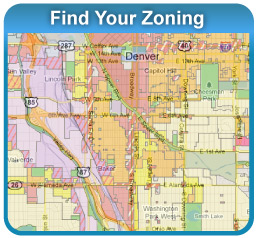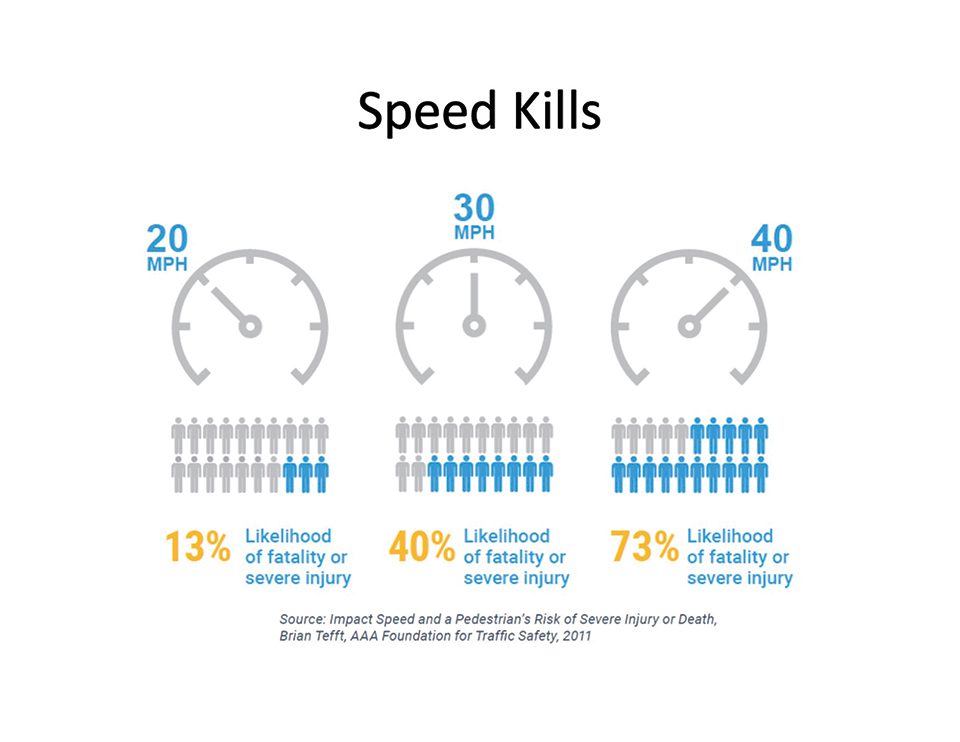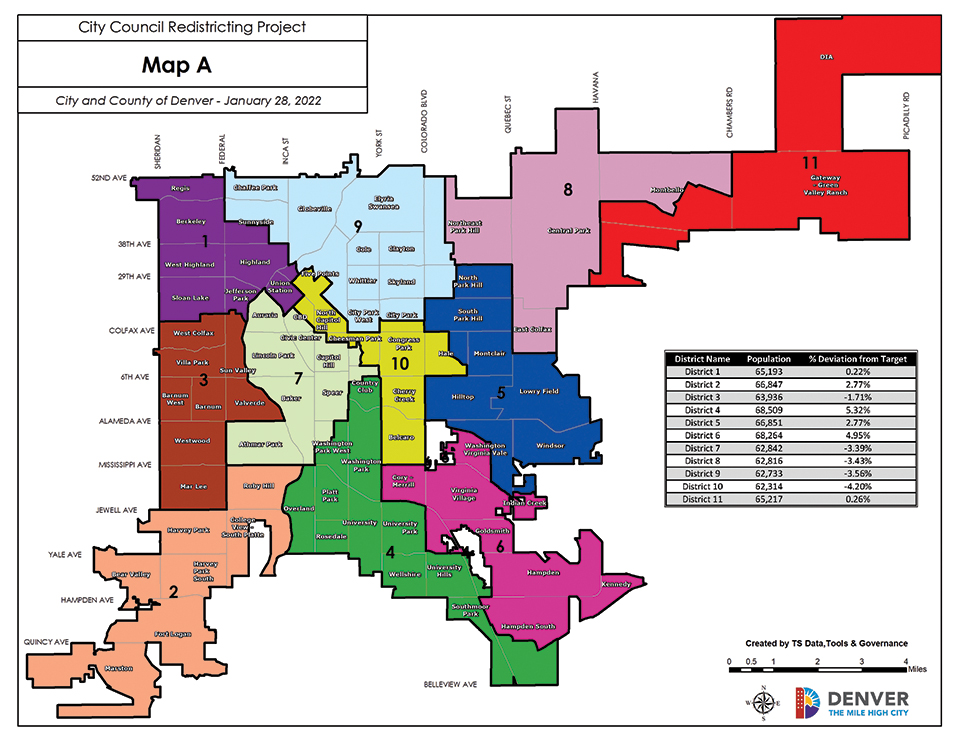It’s been a year since Shawn and Ben Johnson walked away from their experience with Denver’s Board of Adjustment for Zoning Appeals (BOA) feeling confused and angered. Their attempts to obtain a variance for an additional 94 square feet to build a wheelchair-lift accessible accessory dwelling unit (ADU) felt to them like grasping for straws.
Long before the Civil Rights Act of 1968 (Fair Housing Act) and the Americans with Disabilities Act of 1990, Denver’s BOA was born. The entity was created by the city charter in the early 1920s when Denver’s zoning code was a mere 15 pages long. The BOA was part of a zoning framework triggered by the federal government’s passage of the Standard State Zoning Enabling Act in 1924.
The early 20th century was an era when zoning codes were emerging across the country and used for purposes well beyond your standard setbacks and height restrictions. During this time, for example, zoning codes were a powerful factor entrenching racial housing segregation and in confining immigrant populations to specific areas of a city (and out of others).
Today, Denver’s zoning code is closer to 1,500 pages long. And the city is now guided by housing and land use frameworks, such as Blueprint Denver, that were created with social equity outcomes in mind.
But the structure and duties laid out for the BOA in the city charter have not kept up with the times. They remained entirely unchanged until 1956, when the BOA’s responsibilities were narrowed to three basic functions: 1) to provide an administrative review that, if successful, reverses a decision where the Zoning Administrator has “erred;” 2) to grant variances for deviations from zoning code when a hardship has been established; and 3) to stay or delay a zoning enforcement action. And Kniech pointed out in an interview with The Denver North Star, that redlining was still commonplace in Denver in 1956.
In the 1980s, there was one more change: The mayor took over, from City Council, the role of appointing the BOA’s five members and two alternates.
It was this chasm between the city’s values of today and the BOA’s outdated functioning that drew The Denver North Star’s coverage in May and July 2021. Sunnyside couple Shawn and Ben Johnson had been denied a zoning variance—after two hearings, an updated design and an appeal—as they sought to build a wheelchair accessible second floor ADU for Shawn’s mom Catherine Johnson.
In last year’s follow-up reporting, we shared about the Community Planning and Development department’s efforts to correct the BOA mishandling of Ms. Johnson’s disability by granting them an alternate pathway for obtaining a variance. And we highlighted other concerning aspects of the case: the board’s racially homogenous composition, the Johnsons’ experience with bias, the city’s thin options for accountability of BOA members, and a process that did not appear to be consistent from case to case.
This month, there’s a proposal before City Council to bring the BOA into the modern area. District 1 Councilmember Amanda P. Sandoval and Councilmember At-Large Robin Kniech presented their two-phase proposal to Council’s Land Use, Transportation and Infrastructure Committee on Jan. 18, and their Phase 1, in the form of Council Bill 22-0093, will be heard by the entire City Council on Tuesday, Feb. 22. Both Sandoval and Kniech have been hearing from constituents with concerns about the BOA for a while. And while Sandoval is very familiar with Shawn and Ben Johnson’s case, she emphasized that Council Bill 22-0093 is not a response to any one BOA case.
Before formulating their proposal, the two council members enlisted the support of Denver’s Zoning Administration staff in order to understand best practices across the country. The staff combed through modernization efforts—from Austin to Boston, Oklahoma City, Philadelphia, Portland, Miami and New York—to uncover the details of updated practices.
They found trends toward more professional and staff involvement in decisions (versus citizen volunteer boards) and trends toward moving functional details for entities like the BOA out of city charters and into “code,” so that changes can happen when needed to support a city’s plans and goals.
Phase 1
Council Bill 22-0093 leans on the powers City Council has been granted through the charter to “re-establish” the BOA structure, adding requirements for qualifications and training as well as shifting to a shared authority for appointments. The Mayor would retain two of five appointments. City Council would gain two, and the fifth would be jointly appointed. Kniech highlighted an equity-informed city council recruitment apparatus that has been created to draw candidates from a broadened pool across all council districts and a variety of experiences in our city.
If passed, the BOA’s composition would, by June 2022, need to include at least one member from each of the following professions: architect; urban planning, construction, engineering or development; and attorney. Remaining members “should have a demonstrated interest in land use/zoning.”
If passed, the BOA’s composition would, by June 2022, need to include at least one member from each of the following professions: architect; urban planning, construction, engineering or development; and attorney. Remaining members “should have a demonstrated interest in land use/zoning.”
The proposal also requires training for every board member in the areas of zoning code; legal procedure; adopted plans; diversity, equity, inclusion; ADA; civil rights; and fair housing.
Phase 2
The City of Denver operates, generally, through the two frameworks of a city charter and a municipal code (ordinances). A vote of the people is required to change the city charter. And because some details regarding the BOA’s operation are detailed in the city charter, Phase 2 of the plan to modernize the BOA entails moving those details, as is, from the charter to the code before it can embark on further plans to update the BOA’s duties, criteria, standards and process. Sandoval and Kniech anticipate City Council referring this second phase to Denver voters on the Spring 2023 ballot.
Changes that Hit Home
The Johnsons are glad to see City Council taking action. They can picture a day when BOA members are trained and required to meet additional qualifications, a day when the experience for other families will be less heartbreaking. They wonder if the emphasis on including professionals in the construction industry (i.e., requiring the board to include an architect) could perpetuate risks around self-dealing and conflicts of interest. And so, they’ll continue to stay involved.
Their project is back on track, though they haven’t yet broke ground. The lost year brought changes to the construction industry: rising costs, materials shortages and other delays.
Alongside restarting the project, there’s been a formal HUD investigation into the BOA’s handling of their case. Findings will be released this spring.
Once built, though, Ben says, “the ADU will become a sort of monument to our family’s drive and determination.” It won’t replace the year when Shawn’s mom couldn’t live nearby and be provided a safe home to meet her special medical needs.
Despite the delay, Catherine Johnson’s excitement about Colorado has remained strong. She’s talking about favorite meals she’ll cook for Shawn and Ben when she’s here and highlights of Colorado she can’t wait to see, like the Great Sand Dunes National Park and Preserve.
Denverites who would like to provide input on Phase 1 of Sandoval and Kniech’s proposal (Council Bill 22-0093) can sign up to participate in a required public comment session taking place Tuesday, Feb. 22 at 5:30 p.m. You can sign up as early as the Friday beforehand by visiting denvergov.org/citycouncil and selecting “Public Input.” A discussion and final vote could happen as early as that same evening.




Be the first to comment